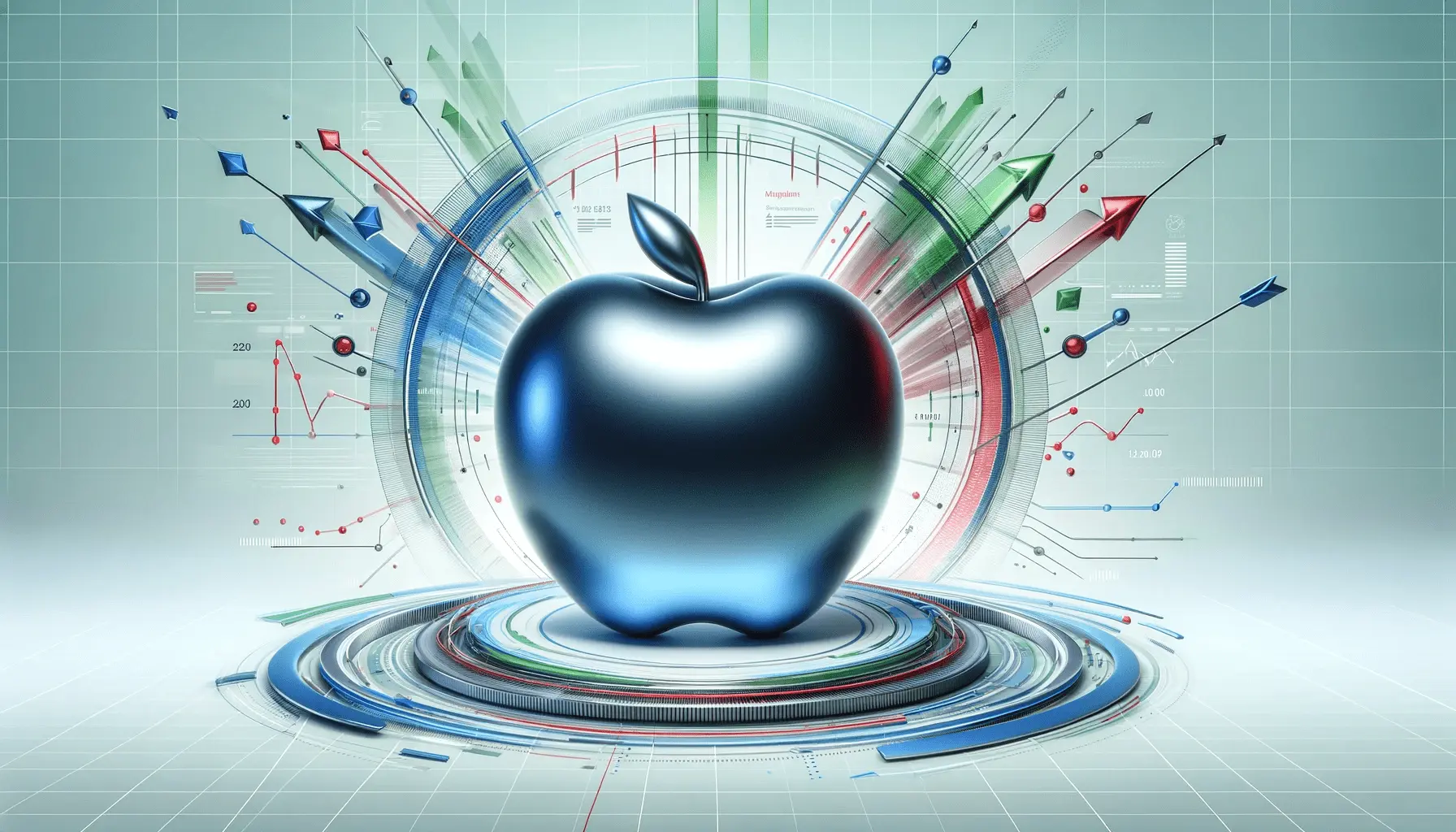As we delve into the digital landscape of 2024, the importance of website performance and user experience has never been more pronounced.
Among the various metrics that gauge website efficiency, Largest Contentful Paint (LCP) stands out as a critical component of Google’s Core Web Vitals.
This article aims to explore the evolving trends and significance of LCP in the current year, offering insights into how it shapes the digital experience.
LCP, by definition, measures the time it takes for the largest content element on a page to load and become visible to the user.
This metric is not just a technical parameter; it’s a direct reflection of the user’s experience while interacting with a web page.
As we progress through 2024, understanding and optimizing LCP is becoming increasingly crucial for webmasters and SEO professionals alike.
- Understanding Largest Contentful Paint
- The Impact of LCP on User Experience
- LCP Optimization Techniques in 2024
- LCP and Mobile Web Experience
- Challenges in LCP Optimization
- LCP’s Role in SEO and Web Ranking
- Future Trends in LCP and Web Performance
- Concluding Insights on Largest Contentful Paint in 2024
- Largest Contentful Paint (LCP) FAQs in 2024
Understanding Largest Contentful Paint
Largest Contentful Paint (LCP) is a performance metric that plays a pivotal role in understanding how users perceive the speed of a webpage.
It measures the time taken for the largest content element visible in the viewport to fully load.
This could be an image, a video, or a significant block of text.
LCP is a user-centric metric, offering a real-world insight into the loading experience of a webpage.
The significance of LCP lies in its direct impact on user experience.
A faster LCP means that the webpage becomes useful to the user more quickly, which is crucial in retaining user attention and reducing bounce rates.
In an era where digital attention spans are short, optimizing for LCP is not just a technical necessity but a business imperative.
Why LCP Matters in 2024
In 2024, the digital landscape is more competitive than ever.
Users expect fast, responsive, and visually engaging web experiences.
LCP has become a key metric in this context, as it directly correlates with the perceived speed of a website.
Websites with a low LCP score are likely to offer a better user experience, leading to improved user engagement and potentially higher conversion rates.
Furthermore, LCP is a critical factor in SEO.
Google’s algorithm updates have increasingly emphasized user experience metrics, including LCP, as ranking factors.
This means that websites with better LCP scores may enjoy higher visibility in search engine results, making LCP optimization a crucial aspect of SEO strategies in 2024.
Optimizing Largest Contentful Paint is essential for enhancing user experience and improving SEO rankings in 2024.
The Impact of LCP on User Experience
The role of Largest Contentful Paint in shaping user experience is multifaceted and significant.
A swift LCP not only enhances the perceived speed of a website but also contributes to a user’s overall satisfaction and engagement.
In 2024, where digital interactions are at their peak, the impact of LCP on user experience cannot be overstated.
Let’s explore the various dimensions of how LCP influences user experience:
- Perceived Load Speed: LCP is a direct indicator of how quickly the main content of a webpage becomes visible to the user. A faster LCP enhances the perception of a speedy website, which is crucial in retaining user attention.
- Engagement and Bounce Rates: Websites with a lower LCP generally experience higher user engagement and lower bounce rates. Users are more likely to stay on a page that loads quickly, leading to more interactions and conversions.
- User Satisfaction: A positive user experience, facilitated by a quick LCP, leads to higher user satisfaction. Satisfied users are more likely to return to the website, fostering loyalty and repeat visits.
Case Studies: LCP’s Real-World Impact
Real-world case studies have demonstrated the tangible benefits of optimizing LCP.
For instance, an e-commerce site that improved its LCP saw a significant increase in customer engagement and a decrease in bounce rates.
Similarly, a news website that focused on LCP optimization experienced an increase in page views and time spent on the site.
These case studies underscore the importance of LCP in real-world scenarios, highlighting its impact not just as a technical metric, but as a driver of user satisfaction and business success.
A focus on improving LCP can lead to tangible improvements in user engagement and satisfaction.
LCP Optimization Techniques in 2024
Optimizing Largest Contentful Paint is a dynamic and ongoing process, especially in the fast-evolving web environment of 2024.
There are several effective strategies that web developers and SEO experts can employ to improve LCP scores.
These techniques not only enhance the LCP but also contribute to the overall performance and user experience of a website.
Key optimization techniques for LCP include:
- Image Optimization: Large images often contribute to a slower LCP. Employing modern image formats like WebP, optimizing image sizes for different devices, and using responsive images can significantly reduce load times.
- Server Response Times: Improving server response times by choosing a reliable hosting provider, using a Content Delivery Network (CDN), and optimizing server configurations can enhance LCP.
- Resource Loading Prioritization: Prioritizing the loading of critical resources and deferring non-critical ones ensures that the most important content is loaded first, improving LCP.
Emerging Technologies and LCP
In 2024, emerging technologies are playing a pivotal role in LCP optimization.
The use of advanced caching mechanisms, edge computing, and AI-driven resource optimization are among the cutting-edge approaches that are reshaping how we approach LCP improvements.
For example, AI algorithms can predict user behavior and preload certain elements of a webpage, thereby reducing load times.
Similarly, edge computing brings data closer to the user, minimizing delays and improving LCP scores.
Embracing emerging technologies is key to staying ahead in LCP optimization in 2024.
LCP and Mobile Web Experience
In 2024, the mobile web experience has taken center stage, with a significant portion of internet traffic coming from mobile devices.
This shift has profound implications for Largest Contentful Paint and overall website performance.
Mobile users expect quick, responsive, and visually appealing experiences, making LCP optimization on mobile platforms more crucial than ever.
Key considerations for optimizing LCP on mobile devices include:
- Responsive Design: Implementing a responsive web design ensures that content is properly scaled and displayed across different mobile devices, which can positively impact LCP.
- Mobile-First Approach: Designing websites with a mobile-first approach prioritizes performance and user experience on mobile devices, directly influencing LCP scores.
- Network Conditions: Optimizing for varying network conditions, such as 3G or 4G networks, is essential for maintaining a low LCP on mobile, as these conditions can significantly affect loading times.
Adapting to Mobile User Behavior
Understanding and adapting to mobile user behavior is also a key aspect of optimizing LCP.
Mobile users often seek quick information and are more likely to abandon a site that loads slowly.
Therefore, focusing on elements that load first and capture user attention is vital in a mobile context.
For instance, optimizing the loading of above-the-fold content, which is the first thing a mobile user sees, can greatly improve the perceived speed of a site and, consequently, the LCP score.
Optimizing LCP for mobile requires a comprehensive approach that includes responsive design, mobile-first strategies, and adaptation to varying network conditions.
Challenges in LCP Optimization
While optimizing Largest Contentful Paint is crucial for enhancing web performance, it presents several challenges, especially in the dynamic digital landscape of 2024.
These challenges range from technical complexities to resource limitations, and addressing them is key to successful LCP optimization.
Some of the common challenges encountered in LCP optimization include:
- Complex Web Architectures: Modern websites often have complex structures and rely on multiple scripts and third-party resources, making LCP optimization a challenging task.
- Resource Prioritization: Determining which resources are critical and should be loaded first can be difficult, especially on websites with diverse content types.
- Consistency Across Devices: Ensuring a consistent LCP across various devices and browsers is challenging due to differing processing capabilities and screen sizes.
Overcoming LCP Optimization Challenges
To overcome these challenges, web developers and SEO experts need to adopt a strategic approach.
This includes regular performance audits, adopting best practices in web development, and staying updated with the latest trends and technologies in web performance optimization.
Additionally, leveraging tools and platforms that provide insights into LCP and other performance metrics can be invaluable.
These tools not only help in identifying issues but also offer recommendations for improvements, guiding the optimization process effectively.
Addressing the challenges in LCP optimization requires a combination of strategic planning, regular performance monitoring, and the use of advanced tools and technologies.
LCP’s Role in SEO and Web Ranking
In the realm of Search Engine Optimization (SEO), Largest Contentful Paint has emerged as a key factor in 2024.
With search engines, particularly Google, placing a high emphasis on user experience as a ranking criterion, LCP has become a metric of paramount importance for webmasters and SEO professionals.
Understanding the relationship between LCP and SEO involves several aspects:
- User Experience as a Ranking Factor: Search engines now use LCP as an indicator of page experience. A lower LCP score, indicating faster load times, can contribute positively to a site’s ranking.
- Impact on Bounce Rates and User Engagement: Websites with better LCP scores typically have lower bounce rates and higher user engagement, which are positive signals to search engines.
- Integration with Other Web Vitals: LCP, along with other Core Web Vitals like First Input Delay (FID) and Cumulative Layout Shift (CLS), forms a comprehensive framework for assessing user experience, influencing SEO.
SEO Strategies for LCP Improvement
SEO strategies in 2024 increasingly include a focus on improving LCP.
This involves technical SEO audits to identify and rectify issues impacting LCP, such as optimizing images, minifying CSS and JavaScript, and improving server response times.
Moreover, SEO professionals are also adopting a holistic approach, where LCP optimization is integrated with overall content strategy, site architecture, and mobile optimization to create a seamless user experience that aligns with search engine algorithms.
Incorporating LCP optimization into SEO strategies is essential for improving search rankings and enhancing overall website performance in 2024.
Future Trends in LCP and Web Performance
As we look beyond 2024, the landscape of web performance and Largest Contentful Paint is poised for further evolution.
Emerging technologies, changing user behaviors, and ongoing algorithm updates from search engines are expected to shape the future trends in LCP and overall web performance.
Anticipated future trends in this domain include:
- Advancements in Web Technologies: New developments in HTML, CSS, and JavaScript, along with progressive web apps (PWAs) and accelerated mobile pages (AMPs), are likely to offer more efficient ways to optimize LCP.
- AI and Machine Learning: The integration of AI and machine learning in web development is expected to automate and enhance LCP optimization, making websites faster and more responsive.
- Increased Focus on User-Centric Metrics: As user experience continues to be a primary focus, metrics like LCP will gain even more prominence, influencing web design and development decisions.
Preparing for the Future of LCP
To stay ahead in the ever-evolving field of web performance, it is crucial for businesses and web professionals to keep abreast of these trends.
This involves continuous learning, experimenting with new technologies, and adapting strategies to meet the changing demands of users and search engines.
Ultimately, the goal is to create web experiences that are not only fast and efficient but also delightful and engaging, ensuring that websites continue to meet and exceed user expectations in the years to come.
Staying informed and adaptable is key to navigating the future trends in Largest Contentful Paint and web performance optimization.
Concluding Insights on Largest Contentful Paint in 2024
As we have explored throughout this article, Largest Contentful Paint (LCP) stands as a cornerstone metric in the realm of web performance and user experience.
Its significance in the digital landscape of 2024 is undeniable, influencing everything from user engagement to SEO rankings.
The journey through the various facets of LCP has revealed its multifaceted impact and the evolving strategies for its optimization.
The Central Role of LCP in Web Performance
LCP’s central role in web performance is clear.
It’s not just a metric; it’s a reflection of the user’s first impression of a website.
In an era where digital speed and efficiency are paramount, LCP serves as a critical benchmark for success.
Websites that excel in LCP optimization are not only favored by search engines but are also more likely to captivate and retain their audience.
Looking Ahead: The Future of LCP Optimization
Looking ahead, the future of LCP and web performance is bright and full of potential.
With advancements in technology and a deeper understanding of user behavior, the possibilities for further optimizing LCP are vast.
The integration of AI, machine learning, and emerging web technologies promises to bring new levels of efficiency and user satisfaction.
- Continued emphasis on user-centric performance metrics.
- Greater integration of AI and machine learning in web optimization.
- Adoption of advanced web technologies for faster, more responsive sites.
In conclusion, Largest Contentful Paint is more than just a metric; it’s a vital component of a website’s success in 2024.
Its optimization is a journey that requires continuous effort, adaptation, and a keen understanding of emerging trends.
By focusing on LCP, businesses and web professionals can ensure that their websites not only rank well but also provide exceptional user experiences, setting the stage for digital success in the years to come.
Want your website to top Google search rankings? Leave the SEO to our professional agency!
Largest Contentful Paint (LCP) FAQs in 2024
As the digital world evolves, so do the questions surrounding key web performance metrics like Largest Contentful Paint (LCP). Here are some frequently asked questions that shed light on this crucial topic.
LCP measures the time taken for the largest content element on a page to load, reflecting the real-world user experience of page loading speed.
LCP is a key metric in Google’s Core Web Vitals, influencing a website’s search engine ranking by assessing user experience quality.
Improving LCP involves optimizing images, reducing server response times, and prioritizing the loading of critical resources.
Yes, LCP can vary between devices due to differences in processing power, screen size, and network connectivity.
Optimizing images, such as resizing and using efficient formats like WebP, is crucial for reducing LCP and enhancing page speed.
Absolutely. Faster server response times can significantly improve LCP by reducing the initial content load time.
No, LCP is part of Google’s Core Web Vitals, which also includes metrics like First Input Delay (FID) and Cumulative Layout Shift (CLS).
Regular monitoring is recommended, as LCP can change with website updates, content changes, and evolving user behaviors.










